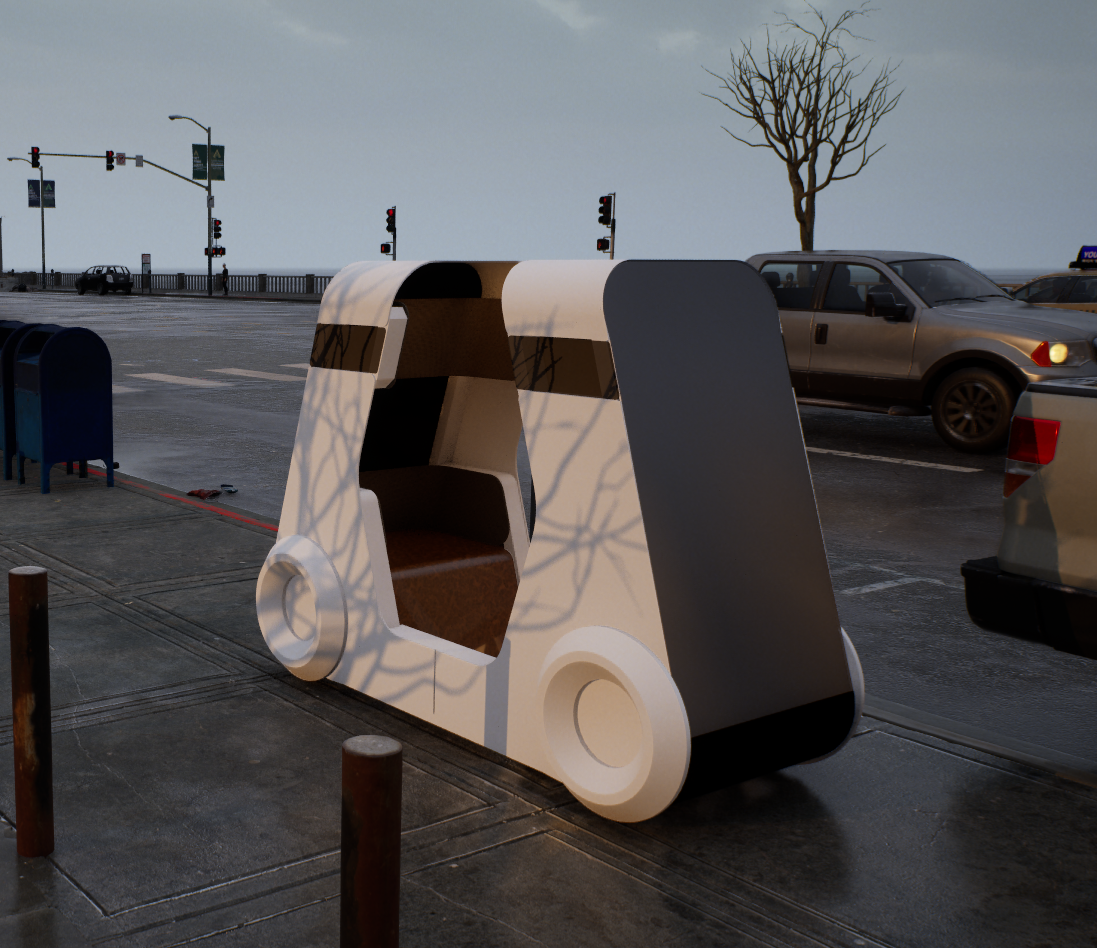Generative Pedestrian Awareness System® (GPAS)
The Bedestrian Hybrid Autonomy Approach
Bedestrian’s proprietary Generative Pedestrian Awareness System® (GPAS) is an AI-driven system designed to ensure safe navigation in dynamic environments. B1 and B2 operate on pre-planned routes, leveraging GPAS to maintain lane positioning and ensure pedestrian safety. The system offers two operational modes:
Hybrid Autonomy – Uses "STOP" or "GO" commands via voice or touch to navigate, while the system ensures safety by maintaining the route, staying in designated lanes, and avoiding obstacles.
Teleoperated Concierge – A remote operator can take control, providing real-time oversight and decision-making when necessary.
GPAS also plays a critical role in training the system for full autonomy. It continuously vectorizes generative feedback from teleoperators, capturing how humans navigate around the robots and how the robots respond to obstacles and interact with pedestrians. This real-world operational data continuously enhances the large language model (LLM) that informs autonomous decision-making. Over time, this process enables progressive autonomy, reducing reliance on teleoperation and improving self-navigation capabilities.
Additionally, Bedestrian’s new platform integrates generative large visual models (LVMs), LLMs, and the robotic operating system, connecting surround cameras, LiDAR, and depth sensors to an agentic reasoning model. This advanced AI system enables situational understanding and human-like reasoning, allowing the robots to adapt intelligently to unexpected environmental changes.
Our Technology and Strategic Approach
Hybrid-Autonomy First
Teleoperation + GPAS + AI: Combining human oversight with Generative Pedestrian Awareness System (GPAS) to safely navigate and learn from dynamic environments.
Progressive Autonomy: Robots vectorize human decisions to build a high-quality, structured corpus of real-world data, enabling eventual co-pilot AI.
Edge-Based LLM Avatars
Robots display a human-like avatar that users can speak to, powered by LLMs and rendered locally on the edge.
Avoids high-bandwidth video streaming, lowers cost, and boosts trust, safety, and adoption.
Vertical Integration
Hardware Design, Prototyping, and Assembly in the USA: Bedestrian controls the end-to-end design and manufacturing of robotic platforms at home, ensuring quality, supply chain security, and faster iteration.
Global Software Development Teams: Augmented with specialized engineering teams worldwide to accelerate innovation and maintain capital efficiency.
This vertically integrated model lets Bedestrian iterate faster, deploy smarter, and scale globally—without depending on third parties or fragmented supply chains.



